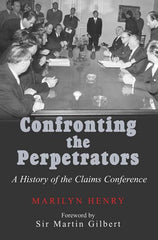Confronting the Perpetrators
Henry, R; Henry, Marilyn
At the end of the twentieth century, the world seemed to rediscover Holocaust survivors. Ceremonies commemorating the 50th anniversary of World War II-era events offered occasions for reflection about the war, its heroes, and its victims. In the US, broad interest in the Holocaust was sparked by two cultural phenomena: the 1993 opening of the US Holocaust Memorial Museum and the film Schindler's List. The collapse of communism, the opening of archives in eastern Europe, and the approach of the millennium-and with it a desire to 'clean the slate'-also sparked a series of confrontations with the past. Among those confrontations was an extraordinary focus on the material losses and injuries suffered by Nazi victims. Class-action lawsuits filed in American courts against European governments and enterprises, improvised commissions, national historical reviews, and international conferences attempted, at century's end, to deal with the material, historical, legal, and moral issues stemming from the Holocaust. These initiatives built on groundwork laid in 1951, when Israel and an ad hoc consortium of voluntary Jewish organizations received an invitation to negotiate with West Germany for 'moral and material amends' for Nazi-era damages. The consortium became the Conference on Jewish Material Claims Against Germany (known as the Claims Conference).
256 pages
Copyright: 1/1/2007




